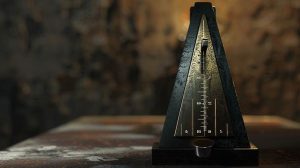
Should you know the chord changes?
I’ve always believed that the best way to gain skill as a musician is to develop one’s ear and its connection to the instrument. That belief led to the creation
Categories:
Categories:
As you improvise, how deep is your level of satisfaction? Do you feel confident? Do the lines coming from your instrument feel authentic to you or do you hear yourself repeating practiced patterns, scales, and safe licks?
If your answer to these question is not ideal for you, I have three exercises to put into your practice routine to bring out the music inside of YOU. These three exercises for mastering improvisation will elevate your skill and confidence.
You’ve probably never considered these three exercises because they go against the prevailing advice of endless scale and pattern repetition. They go against the idea that higher-faster-louder should be the impressive sound of your jazz playing. I’m hear to tell you to ignore that focus on ‘sounding’ like improvisation, and instead, release the creativity that is inside of you to truly improvise.
Before giving you these suggestions, let me remind you of the power of habit. Habit is the engine that transforms your actions into results. Very few things you do once in a while will develop into a skill. Habit creates the compound interest of your repeated activities. So for each of the three practice exercises I’m about to give you, their power lies in your habitual use of them. In other words, do them each day.
Singing is the closest relationship your body has to the music inside. With no worry about keys or chords, the music emerges from you. Maybe the tone is less that great singers, but that doesn’t matter. You are creating something close to what you hear.
First, play a note in the middle of your instrument. Now, sing that note. Play a different note and sing that. Do this a few times to warm up your ear.
Now, reverse the process. Sing a note somewhat close to the last note you sang after playing. Now, find that note on your instrument. How close did you come to that pitch that you sang? Did it take you a couple more tries to find it? That’s okay. In time, you will need fewer attempts before nailing the note you sang.
Again, the process is:
Have you ever listened to a track and imagined what you might play over it? In this exercise, you are developing your musical imagination.
Inside your mind, you are rid of the friction of keys, chords, and your instrument. Don’t imagine what others would play over the harmony you are hearing, but what YOU would want to play.
Let’s add your instrument. While you can imagine your improvisation while you are driving or sitting at the beach, try this with your instrument at hand.
For the music track, you can use a song on the radio, an Aebersold track, something you find on Youtube, or a loop from my Groovz Playground.
Regardless, after imagining some melodic lines, see if you can play them on your instrument. One intermediate step you should try is to write down a line you imagined. Be careful of self-criticism as you doubt how fantastic your imagined line is. You are not looking for Beethoven, just something that comes to mind.
In doing this, you are strengthening the connection between your musical imagination and your instrument. Go ahead and transcribe some imagined lines. Then play them on your instrument with the music track.
Groovz Playground is perfect for this exercise because the tracks are made up of repeating loops, so you can play the line over and over until you are satisfied with it. No need to keep going back to locate a certain place in the recorded track.
You’ve probably read this suggestion in other places on MusicSavvy like this post on Happy Birthday.
I believe that you don’t really know a tune until you can play it on keys other that the standard one or that one on which you always play. In those cases, you are likely using muscle memory to play it rather than your ear.
Pick a tune you know really well. That’s why Happy Birthday works so well. But it can be a children’s song, pop song, Christmas Carol, or any melody you can sing in an instant.
First, sing the song – just part of it if you wish. Can you find the first note of what you just sang? Now play through the line or song. If you get stuck early on, you might not have chosen a good melody for this exercise.
As you sing through a song, pay attention to where you get stuck. Stop playing and sing that next note. Find that note on your instrument. Again, if you are frequently getting stuck, try it on a simpler tune. Instead of starting this exercise on, say, Lush Life, start it on Joy to the World!
What do these three exercises for mastering improvisation have in common? They are training your ear to guide your instrument. Too often improvisers lead with their instrument. But there’s no music inside the metal, wood, or electronics of your instrument. The real instrument you are playing is between your ears – your mind.
Your mind has much more music in it that you probably realize. But because you are leading your improvisation with that machine we call a musical instrument, your improvisations are lacking much of your musical imagination.
Practice these three exercises for mastering improvisation for just a short time within each of your practice sessions. Do this for 30 days. At the end of those 30 days, do you hear a difference? Is your instrument starting to find more interesting notes and phrases?
You won’t know until you try.

Trombonist, author, marketer, & tech guy
Share this post…

I’ve always believed that the best way to gain skill as a musician is to develop one’s ear and its connection to the instrument. That belief led to the creation

I recently watched a video performance by the amazing classical pianist Yuja Chang. I’ve seen her memorizing motion and heard her virtuosic playing before, but something hit me after seeing

I have created a AI chatbot called Jazz Master Chat that draws from 75 hours of interviews from my Jazz Master Summit event a couple of years ago. I interviewed

My recently turned 18 year old son is a passionate photographer He 8217 s got himself a little business

A couple weeks ago I sent Richie Beirach a YouTube clip from the movie Whiplash as a bit of

I originally meant to write this as a reply to a comment Richie Beirach wrote on my blog But

Tools for helping musicians at all levels learn about jazz and play to their full capability.
Web design and marketing by:
Michael Lake @JazzDigitalMarketing.com
This is just a fake book example for the type of website I can build for you. Just trying to use a little humor here!